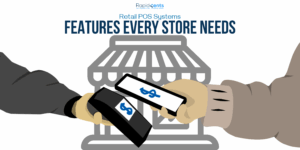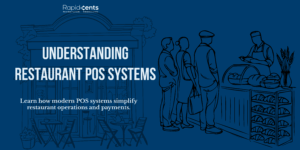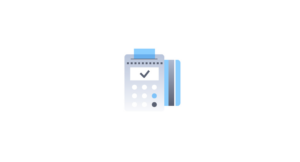A card declining at the checkout can be a frustrating experience for both the customer and the brand. While the customer is unable to understand the cause of the decline, it can also be difficult for the business to understand if the payment can be completed. Whether the customer is processing payments online, through a POS terminal, or by recurring billing, understanding why credit card declines happen is the first step to preventing them.
Businesses must understand how to handle card declines to reduce lost sales due to such errors that are commonplace and cannot be avoided. Understand what the common codes mean during a card decline and how to fix the issue as a business.
What Is a Credit Card Decline?
A credit card decline occurs when a payment can’t be authorized by the issuing bank. This means the bank either can’t confirm that the transaction is legitimate or that the cardholder has sufficient funds.
Declines can happen in-person (at a POS terminal) or online, and they’re usually followed by a short error message or code, such as “Insufficient Funds” or “Do Not Honor.”
If you process in-person transactions, your POS system plays a key role in how declines are handled. Learn more in our Complete Guide to POS Systems.
Common Reasons for Credit Card Declines
Even the most reliable payment systems face decline scenarios. Here are the most common causes:
1. Insufficient Funds
The customer’s account balance doesn’t cover the purchase amount, the most frequent reason for declines.
2. Expired Card
Cards have expiry dates, and many customers forget to update them, especially for recurring payments.
3. Incorrect Card Details
Typos happen. Entering an incorrect card number, CVV, or expiration date triggers an immediate decline.
4. Credit Limit Exceeded
If the purchase would push a card over its credit limit, the issuer blocks it automatically.
5. Suspected Fraud
Banks use fraud-detection algorithms to flag unusual activity, like a high-value purchase or international transaction.
6. Technical or Network Errors
Sometimes the problem isn’t with the card or customer at all, it’s with the connection between the POS system, gateway, or issuing bank.
Types of Declines
Credit card declines typically fall into two main categories:
Soft Declines
A soft decline happens when a transaction is temporarily rejected. An abrupt loss of network access or inadequate funds in your customer’s account could be the cause. Soft declines may typically be handled by retrying the transaction, which will generally resolve immediately. The issue can often be resolved by retrying the payment.
Examples:
-
- Insufficient Funds
- Processor Decline
- Temporary Hold
Hard Declines
A hard decline means the payment will fail every time until the issue is fixed. This can be due to invalid account information, a possible scam, or a lost or stolen card.
Examples:
-
- Expired Card
- Invalid Account Number
- Stolen or Blocked Card
For in-person transactions, a reliable POS system can instantly notify staff of the decline type, helping them assist customers quickly, another reason to invest in a modern POS solution.
Understanding Decline Codes
Each decline has a code that identifies why it failed. Here are some of the most common:
|
Code |
Meaning |
Action |
|
05 |
Do Not Honor |
The customer must contact their bank. |
|
51 |
Insufficient Funds |
Retry or request another payment method. |
|
54 |
Expired Card |
Update card details. |
|
14 |
Invalid Card Number |
Check for typos. |
|
57 |
Transaction Not Permitted |
Bank restriction: contact the issuer. |
|
91 |
Issuer or Switch Inoperative |
Temporary issue; retry later. |
Understanding these codes can help staff resolve payment issues faster, especially in-store where customers are present.
How Declines Impact Businesses
Declined payments may seem minor in isolation, but their cumulative impact can be significant.
- Lost revenue: Each failed transaction is potential income left on the table.
- Customer frustration: Repeated declines erode trust and discourage future purchases.
- Operational delays: Staff waste time troubleshooting failed payments at checkout.
- Higher costs: Chargebacks, retries, and manual resolution add hidden expenses.
For retailers and restaurants, card declines at the point of sale can even affect line flow and customer experience. That’s where an integrated POS system helps, providing real-time visibility and quick fallback options.
How to Reduce Credit Card Declines
While no business can eliminate declines entirely, several best practices can dramatically reduce their frequency.
1. Keep Payment Data Accurate
Regularly verify customer billing details and expiration dates. Automated account updater tools can refresh expired card data without customer input.
2. Use Tokenization and Encryption
Protect sensitive payment data with tokenization, so even if a breach occurs, the card details remain unreadable.
3. Enable Smart Retry Logic
Set up automatic retries for soft declines at different intervals; often, the issue resolves itself within hours.
4. Communicate Clearly
Notify customers when a payment fails and guide them through the next steps (update card info, contact their bank, or retry).
5. Work with a Reliable Payment Processor
The right provider reduces technical errors, improves authorization rates, and offers better insights into decline patterns.
Final Thoughts
Credit card declines are an unavoidable part of modern commerce, but they don’t have to cost your business sales or reputation. By understanding the reasons and types of declines, you can respond faster, retain more customers, and prevent lost revenue.
For businesses that accept in-person payments, using a smart POS system adds another layer of visibility and control. From instant decline notifications to integrated retry options, the right POS keeps your checkout experience smooth even when the network isn’t.
Optimize your checkout and payment reliability with RapidCents




